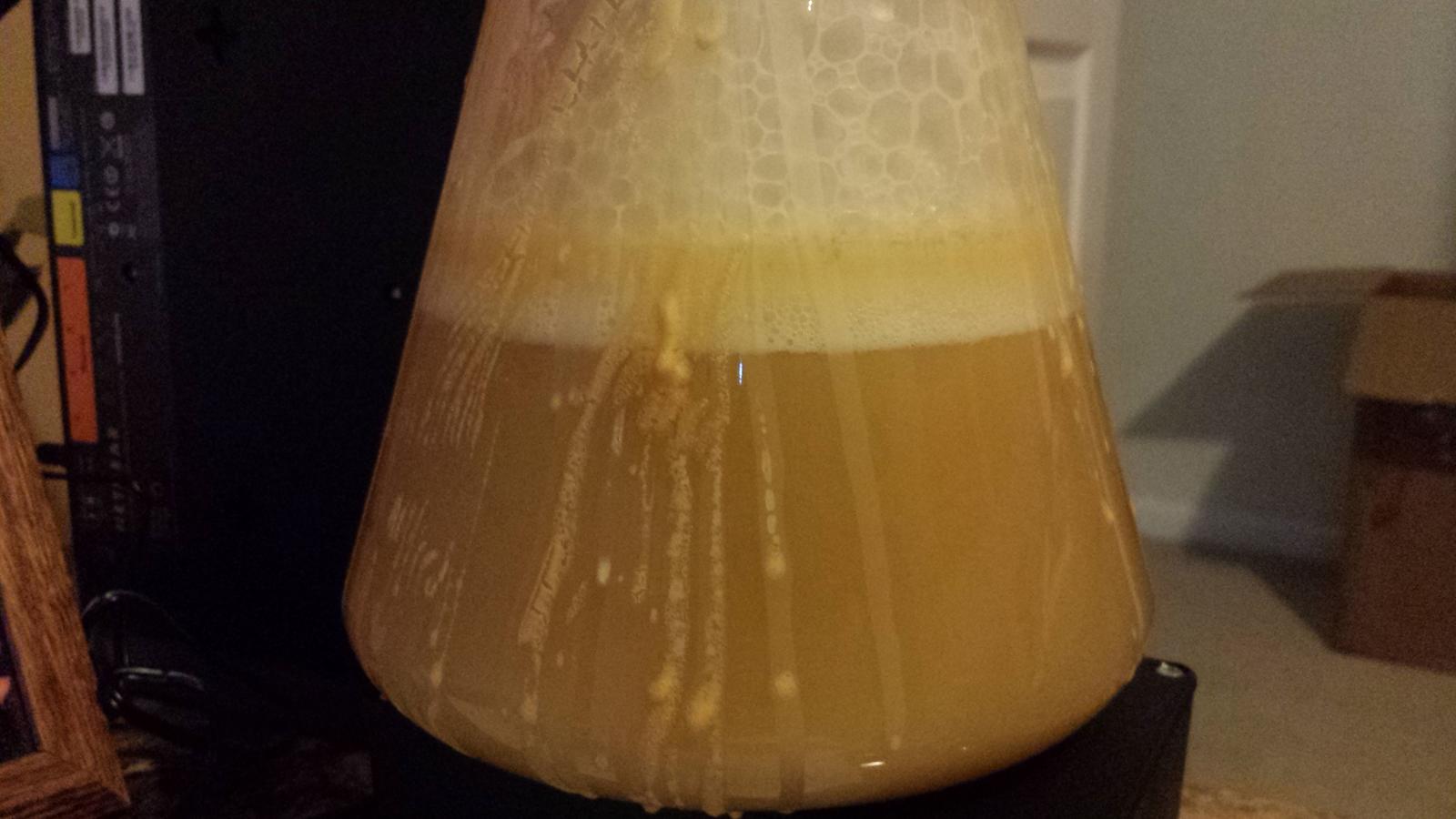drummerguy
Well-Known Member
This is my first multi-step starter, and only my second starter ever. On Wednesday I boiled my wort, added my yeast (Wyeast 3787), and set my flask on the stir plate. I checked it last night and there was still a bit of foam on top. I decided I let it go one more night before putting it in the refrigerator. When I woke up today, I saw this. I know the temperature in the room got up to 78 degrees, but I quickly lowered it with a fan. Is the starter ruined? Is there still enough yeast to do another step? Also, should I go ahead and put it in the refrigerator?
My second question is about added fresh wort for the second step. Do I need to cool the wort in the pot before adding it to the flask? After adding the wort, do I need to swirl everything before putting it back on the stir plate? I'm sure these are dumb questions, but I don't want to mess it up.

My second question is about added fresh wort for the second step. Do I need to cool the wort in the pot before adding it to the flask? After adding the wort, do I need to swirl everything before putting it back on the stir plate? I'm sure these are dumb questions, but I don't want to mess it up.









![Craft A Brew - Safale S-04 Dry Yeast - Fermentis - English Ale Dry Yeast - For English and American Ales and Hard Apple Ciders - Ingredients for Home Brewing - Beer Making Supplies - [1 Pack]](https://m.media-amazon.com/images/I/41fVGNh6JfL._SL500_.jpg)


















































